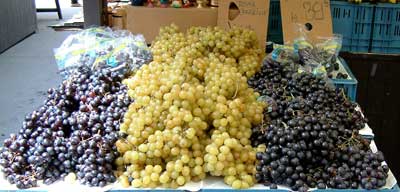
Wine grapes are simply varieties of grape specifically for making wine, though one or two double up as eating or table grapes as well.
A light rosé wine blended from red and white wines. It can also be a white wine made with black grapes, "blush" rather than red because of the shortness of the time for which the juice sits with the stems and grape skins.
The most common barrels used in wine-making are the Bordeaux, at 59 gallons (225 litres), known as the barrique, and the Burgundy at 60 gallons (228 liters). Some wine-makers of the Antipodes and the Americas use the large hogshead barrel at 79 gallons (300 litres).
Organic wine is extremely difficult to define as, first, the grapes should be organically grown, avoiding the use of herbicides and sythetic pesticides and fertilisers, and, second, the wine should be organically made. In practice this is rather uncommon. At the moment the EU does not have criteria governing the production of "organic wine". In Europe, as well as Australia and California grapes may well be grown organically and use low levels of sulphur dioxide during wine making. The reason sulphur is used is to combat mildew which is part and parcel of making wine. Because no suitable alternative has been found to sulpur or a combination of copper sulphate and and lime, these are considered, in limited quantities, acceptable in the production of organic wine. On the whole, organic wine is improved by the lack of chemicals and many great wines are, effectively, organic. However, they may not advertise themselves as such as they see it as simply part of the production of a quality wine.
Bottles of wine come in a variety of shapes and sizes. For details, click on the link 'bottle' below.